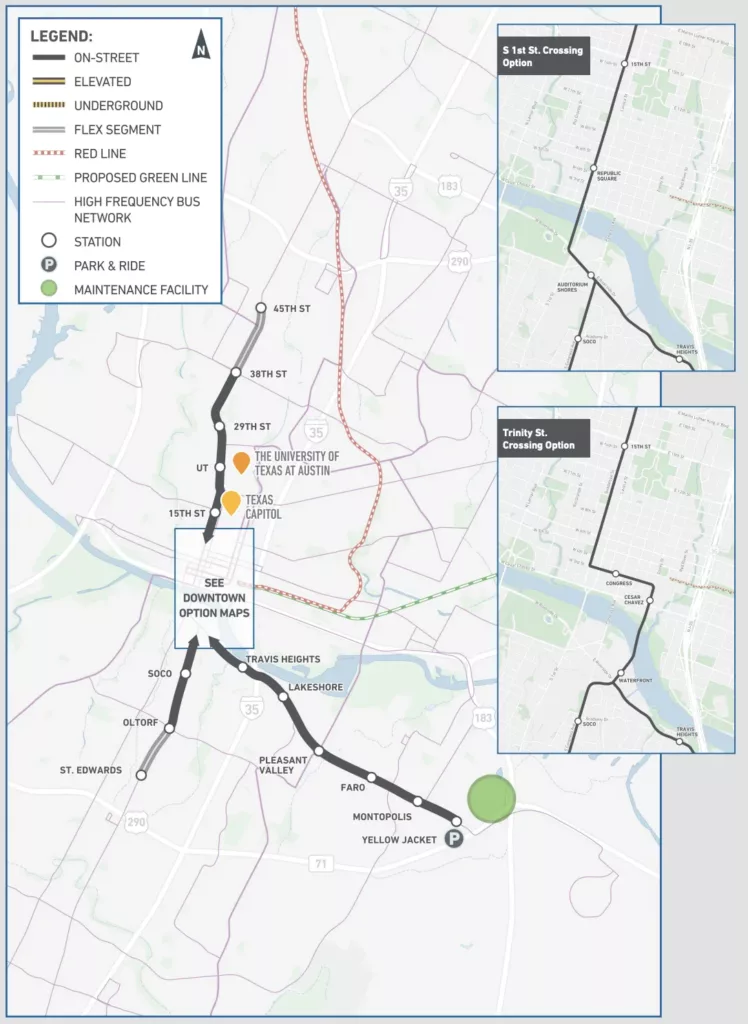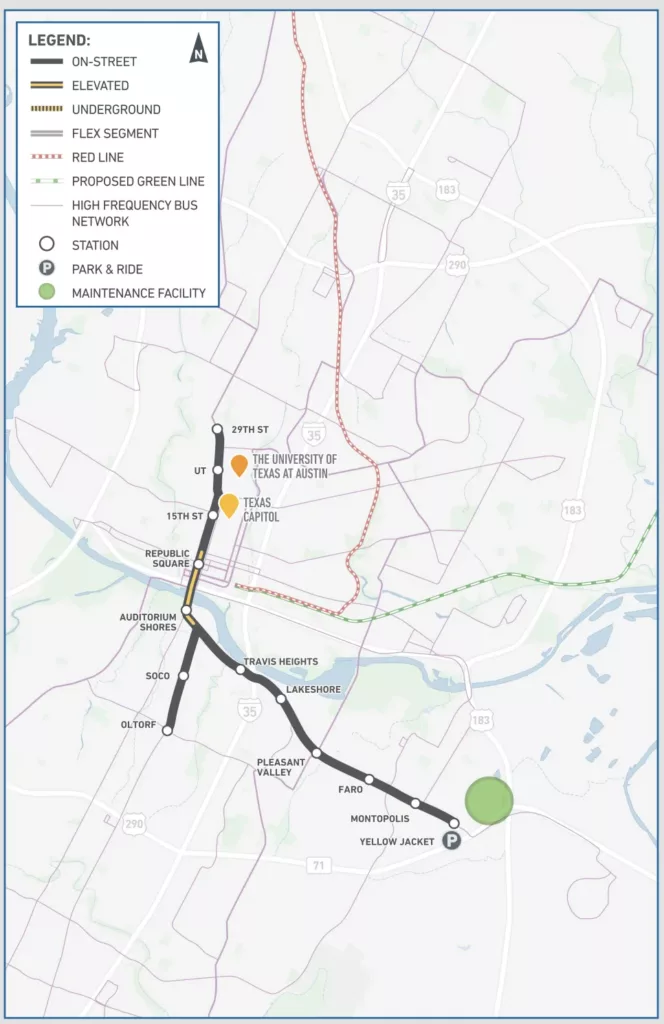AURA’s Project Connect Working Group has created a Graded Rubric for the 5 Project Proposals released by Austin Transit Partnership based on the following criteria listed below. The goal of the rubric is to help discern the pros and cons of each proposal. As AURA works towards making an endorsement of one of the proposals, our organization wants to give members the information so that they can make an informed vote.
Evaluation Criteria
- Ridership
- Connectivity
- Rider Experience
- Expandability
- Pedestrianization Potential
- Community Reach & Equity
These six criteria are focused on as they are an indicator of many successful systems both nationally and globally. These are also criteria that transit experts point to as key marks when building a new rail system. While all options are fundamentally better than the current setup, it is always important to compare and contrast proposals.
Details
Ridership
Ridership is a quite straightforward criteria: the number of riders the system expects to serve on a daily basis indicates the level of demand for and success of the system. This is possibly the best starting point we have in evaluating a successful transit system.
Relevant Indicators:
- ATP’s estimates for ridership for each route here
Connectivity
Access to a wide variety of local or regional activity centers is one of the main goals of any transit system. Connectivity is the criteria which measures the degree to which the system facilitates this, whether the access is through a connection directly to a key destination (or within walking/rolling distance), or through additional modes of transportation, such as a bus, bike, or car.
Relevant indicators:
- Connections to essential and daily needs, such as jobs, affordable housing, and grocery stores.
- Connections to services, such as medical services, gyms, and parks
- Connections to places of personal enrichment such as schools, universities, and libraries
- Connections to personal and group entertainment, such as museums, movie theaters, bars, and clubs
- Connections to forms of transportation that fill in the gaps (BRT, bike or vehicle shares, pedestrianized areas)
Rider Experience
A key factor in the continued success of a light rail system is the rider experience. Even if a route is connected well and can handle high ridership, if the rider experience is consistently negative, people are much less likely to use it. Major factors in rider experience can be measurable, such as frequency and speed, or more qualitative, such as accessibility and comfort.
In order to achieve our mobility goals our light rail system will need to be attractive and useful to both transit dependent and all purpose riders. So Rider Experience is of critical importance to the success of both Project Connect and Austin mobility as a whole.
Relevant indicators:
- Route Frequency
- Average speed
- Reliability
- Accessibility
- Comfort
It’s also important to note that certain indicators, like Route Frequency, are ridership multipliers. So we would get significantly more bang for our buck out of any expansions (or in the initial build) for a system with higher frequencies and similar indicators.
Expandability
Expandability is how easy the system will be to expand from the completion of the first phase of the system. It’s a measure of the potential for the rail system to grow to accommodate more riders and lay track to complete the original vision of Project Connect in the future. Or better yet, become even bigger and better than the original Project Connect vision.
More critically, the initial rail options that have a line “forking” to Oltorf visiting South Congress will be easily expanded in the same way onto South Congress. These two options are:


Relevant indicators:
- Disruptiveness and flexibility of future expansions
- Political feasibility of expanding in each direction after phase 1 is built
Pedestrianization Potential
Good transit systems have priority for multiple modes of getting around, which includes pedestrianization. Pedestrianization is a priority for urbanists in its own right.
Since there are very few areas that are fully pedestrianized downtown currently, there’s a lot that can be gained by prioritizing good pedestrian spaces next to transit. This not only improves accessibility of transit, but creates great, memorable, public spaces.
In all of the options, the Drag has been mentioned as a candidate for pedestrianization.
Relevant indicators:
- Potential pedestrianized blocks for each scenario
Community Reach & Equity
A comprehensive transit system can connect people from all backgrounds to opportunities. Community Reach is a criterion for evaluating a light rail system based on the extent to which it serves different neighborhoods or districts within the city. Equity ensures that regions and people of all backgrounds have access to opportunities.
Relevant indicators:
- Number of districts covered
- Low-income & minority neighborhoods covered
Ratings will reflect ATP’s metrics on the number of affordable housing units within a ½ mile of each stop, detailed at https://www.atptx.org/about/light-rail.
What’s Not Covered
- Grade Separation
- Partially covered as part of Rider Experience but does not have its own criteria
- Airport Connection
- Partially covered as part of Connectivity but does not have its own criteria
If you’re interested in reading the full evaluation you can read our comprehensive evaluation rubric document.
